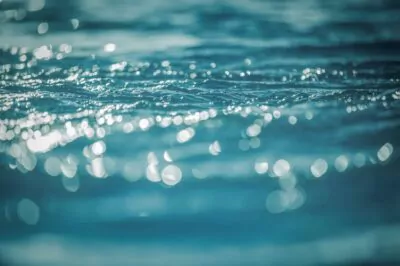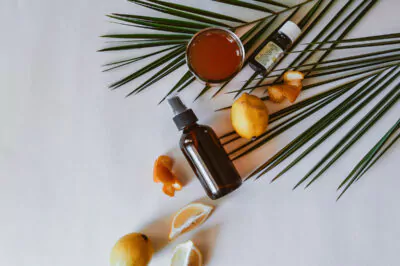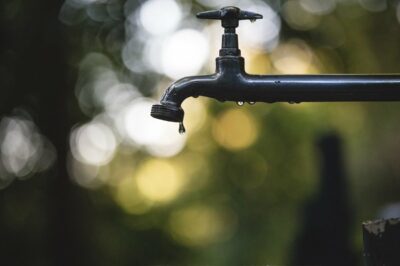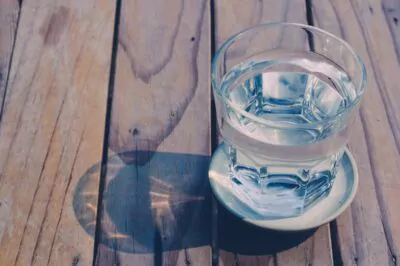How much thought have you given to the quality of the water you drink?
While the water quality here in the United States is (by many measures) very clean, we have to understand that “clean” in this sense is relative. We may not have widespread issues with things like cholera (which still affects over 170K people a year in Asia & Africa), or dysentery, but that doesn’t mean our water isn’t making us sick.
When water is contaminated with viruses and bacteria – the kind that can leave you running for the bathroom, or worse, to the hospital – the response is pretty acute, immediate, and noticeable.
But what about the kinds of contaminants in our nation’s tap water that can contribute to chronic disease?
What about the low levels of things like pharmaceuticals, antibiotics, estrogens, and cancer-causing chemicals that we consume daily through our “clean” water?
Let’s talk about these contaminants, why water is so important and how to shop for the perfect water filter.
Our Most Essential Nutrient
Water is our most essential nutrient. It is responsible for the transport of oxygen, nutrients, and waste products into and out of all the cells in our body. It’s often called the “universal solvent” because it helps to dissolve minerals in the body and make them accessible to our cells, it helps to regulate body temperature, and it protects your organs and tissues.
Water helps prevent constipation, it eases the burden on the kidneys and liver by flushing out toxins, and it helps to keep your lymphatic fluid flowing.
Up to 60% of the adult human body is water, and babies are almost 80% water!
DIY: Fruit Infused Water Recipes
Bottled Water, Tap Water or Filters: Which one is the best?
Alkaline Water: Healthy or Hoax?
Unfortunately, our water can also be the source of exposure to contaminants and intentionally present chemicals that can negatively affect our health.
Too Many Chemicals
It used to be that our water treatment plants, intended to deliver fresh, clean water to our homes, only had to deal with bacterial and viral contaminants. Over the decades, as industrial and agricultural activities increased, so too have the number and kinds of chemicals we find in our water.
In 2009 the Environmental Working Group did an analysis of nearly 20 million drinking water tests and discovered that water suppliers identified 316 contaminants in that water, most of which are unregulated.
Our water supplies are now contaminated with pesticides, pharmaceuticals, narcotics, heavy metals, and synthetic estrogens to name a few.
And many of the chemicals that are intentionally added to our water to address bacteria and viruses, like chlorine or chloramine can have negative unintended side effects.
The bottom line is that we have far more chemicals in our water than we used to, and we don’t have the infrastructure to remove them.
A Failing System
In the US, we assume that because we’re not getting acutely sick, our water is clean and safe and we don’t have to worry about it.
Unfortunately, this is just not true.
The American Society for Civil Engineers, which grades our nation’s infrastructure (roads, bridges, etc.) has rated our water infrastructure a D+ in their most recent report.
According to an article in the New York Times from May of 2017 “If you live in the United States, there is a nearly one-in-four chance your tap water is either unsafe to drink or has not been properly monitored for contaminants in accordance with federal law”
The National Resources Defense Counsel in a May 2017 report found that nearly 77 million Americans lived in places where their water systems were in some violation of safety regulations, including the 1974 Safe Drinking Water Act.
The water crisis in Flint, MI, while devastating, has re-focused our attention on water quality – something that’s long overdue. In that city, over 100,000 people were exposed, for a significant period of time, to drinking water with dangerously high levels of lead. In some samples, the lead levels were such that the tap water would be classified as toxic waste!
So, Now What?
So, what do we do? We properly filter our water!
The job of producing clean water, free from the harmful chemicals that are commonly present in tap water now fall on the consumer. As an environmental toxins expert and educator, addressing cooking and bathing water is one of the first things I often encourage people to change, because clean water is so important.
The first step towards safer, cleaner water is knowing what contaminants are present in yours. You might think your first step is to run out and buy a filter, but until you know what contaminants you need to deal with, you won’t be clear on what kind of filter to get.
Step 1: Look up Your Local Water Quality Report
This report should give you a snapshot of the contaminants present and whether your water exceeds any of the EPA Drinking Water Standards- look for the MCL or “Maximum Contaminant Level” on your report. If any of the levels in your water are close to, or exceed those standards, you want to be sure to filter them out.
No single filter is perfect; some may not address contaminants that you have (like fluoride), or others may be overkill and more money than you need to spend.
Step 2: Buy a Filter that Fits Your Needs
Basic carbon filtration is a necessary and important component to any filter, but on it’s own won’t do anything to address microbes, fluoride, or do a good enough job reducing lead level.
If an inexpensive pitcher filter is all your budget allows, it’s still better than nothing!
Reverse osmosis is one of the most popular ways to filter water and is indeed one of the most effective, as RO systems are able to reduce or remove nearly all contaminants. But the trade-off is that RO systems strip the water of beneficial minerals and can leave it tasting flat. If an RO system is what’s needed to properly filter your water, be sure to re-mineralize your water before drinking! Many RO systems have a final re-mineralization state; don’t skip this!
While I don’t have a favorite brand of filter, here are some companies that make great ones, along with a resources to help you get better, cleaner water!
Great Filters and Resources
- Berkey. Berkey makes these beautiful steel water canisters that filter your water with various filter cartridges, which you can customize based on the contaminates you’re addressing. Many of my clients love their Berkeys!
- Aquatrue. This countertop RO system is heavily promoted by a number of people in the online wellness space, and by all accounts it seems to be a good system, save for the plastic container, which I’m not a huge fan of. For a similar price point, you can get an under-sink, multi stage system that doesn’t take up counter space.
- CleanAirPureWater.com. Run by my personal “water guy” Jim McMahon, this website is where I encourage people to start, as Jim will happily talk you through your water report and help point you to a filtration system that’s appropriate for your situation.
- EWG Water Filter Guide. Check out the EWG’s Water Filter Guide to help you decide which is the best type of filter technology.
The goal is to have clean, pure water to drink, cook with, and bathe in. While our water is definitely better than in some places in the world, it’s still not ideal. Until we have stronger federal regulations around pollution, and stricter water quality standard, we will need to filter our own water.
References
Fortin, Jacey. “America’s Tap Water: Too Much Contamination, Not Enough Reporting, Study Finds.” The New York Times. The New York Times, 04 May 2017. Web. May 2017.








Amazing Article I love your content. 🙂